Non-Verbal Reasoning Classification: Meaning, Questions, Examples
In non-verbal reasoning classification, four or five figures would be given in the options. Aspirants need to find a figure that does not resemble the same characteristics as the others. In short, aspirants need to determine the odd figure in the group. In this article, we will cover classification patterns, Non-verbal reasoning classification examples, Non-verbal reasoning classification MCQs, Non-verbal reasoning questions, Non-verbal reasoning examples etc. Questions from this topic have been asked in various competitive exams and entrances such as SSC, Railways, Insurance, MAH MBA CET, CUET, BITSAT etc. This topic is asked in the exams to check the evaluation ability of a candidate. As the MAH MBA CET is approaching, students can attempt the latest Free Mock Test designed for the aspirants by our experts to score a high percentile in the exam.
CAT 2024: 20 Free Mock Test | 10 Year PYQs | 60 Day Study Material | Most Scoring Concepts
XAT 2025: Section-wise Preparation Tips | Sample Paper
Don't Miss: IBSAT 2024 Mock Tests | NMAT 2024 Sample Papers | MAT 2024 Sample Papers
Question with Solutions: Missing Number | Alphabet Test | Arithmatical Problems | Calendar
- Approach to Solve the Questions Based on Non-Verbal Reasoning Classification
- Patterns of the Non-Verbal Reasoning Classification
- Tips to Deal With the Non-Verbal Classification Questions
- Practice and Resources
- Question Weightage of Non-Verbal Reasoning Questions of Classification in Competitive Exams
- Practice Questions For Non-Verbal Reasoning Classification
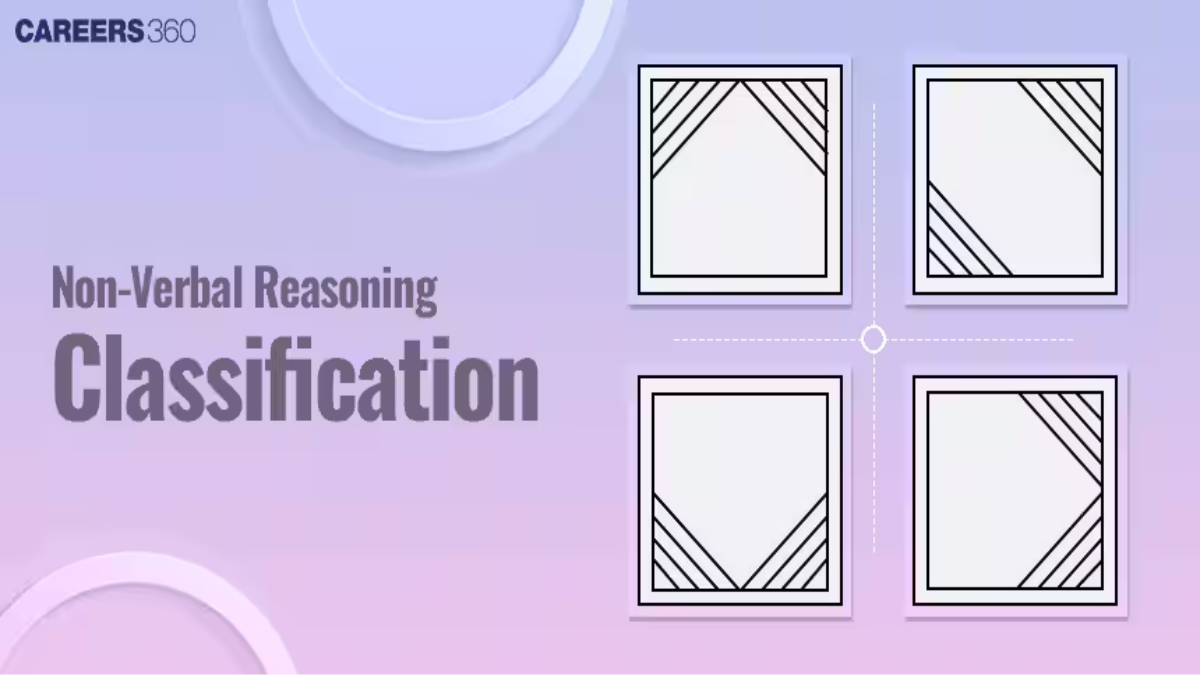
Approach to Solve the Questions Based on Non-Verbal Reasoning Classification
To find the answers to such questions, aspirants need to determine the pattern being followed by the given figures based on the shapes, rotation or symmetry. Once the pattern is determined, it will be easier to choose the odd one out from the group of figures.
Patterns of the Non-Verbal Reasoning Classification
The following are the patterns based on the non-verbal reasoning classification that we often see in the exams-
Out of the given figures, elements of some of the figures would be rotating clockwise or anticlockwise by 45 degrees, 90 degrees or 180 degrees.
Out of the given figures, the elements of some of the figures would be black while the elements of the odd figure would not contain black colour.
Out of the given figures, the elements of some of the figures might increase or decrease in size.
Out of the given figures, the elements contained in some of the figures might increase or decrease in number.
Tips to Deal With the Non-Verbal Classification Questions
To solve non-verbal classification questions, an aspirant must have the following understanding-
An aspirant must be able to distinguish between the common and uncommon elements if any present in the given group of figures.
An aspirant must be able to visualise the rotation of elements taking place in the given figures.
Practice and Resources
Following are the recommended sources for the practice of the questions of non-verbal classification problems -
a) A Modern Approach to Verbal & Non-Verbal Reasoning by R.S. Aggarwal/ A Non-Verbal Reasoning book by R.S. Aggarwal
b) Analytical Reasoning by M.K. Pandey
c) Logical and Analytical Reasoning by A.K. Gupta
d) Test of Reasoning by Edgar Thorpe
e) The candidate must practice non-verbal reasoning pdf and must attempt non-verbal reasoning test, Non Verbal Reasoning MCQs to ace the topic non-verbal classification reasoning.
Question Weightage of Non-Verbal Reasoning Questions of Classification in Competitive Exams
In past years, a good number of questions were seen on this topic but nowadays in various competitive exams like SSC, Railways, and CUET, an aspirant can hardly expect any questions from this topic. The weightage is 0 to 1 question.
The important non-verbal reasoning topics are given below:
For Non-Verbal reasoning read the topics below:
Practice Questions For Non-Verbal Reasoning Classification
The practice questions are based on the latest non-verbal reasoning syllabus. The candidates must practice it carefully.
1. Directions: In the following question find the odd figure out from the given responses.
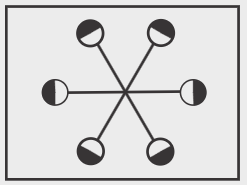
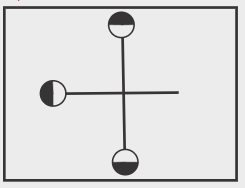
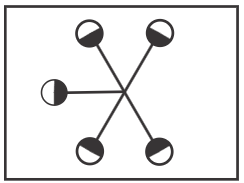 (correct)
(correct)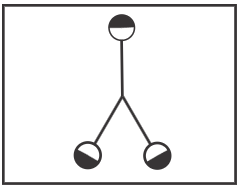
Solution-
Let's check each option –
First option: In this figure, the top part of the circle is shaded.
Second option: In this figure, the top part of the circle is shaded.
Third option: In this figure, the bottom part of the circle is shaded.
Fourth option: In this figure, the top part of the circle is shaded.
So, the figure in the third option is different from the others as the bottom part of the circle is shaded. Hence, the third option is correct.
2. Directions: Find the odd figure from the given alternatives.
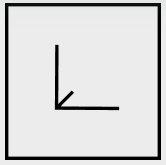 (correct)
(correct)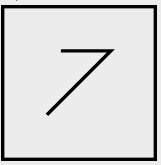
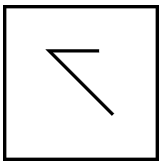
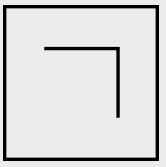
Solution-
Let's check the options –
First option: In this figure, three lines are connected.
Second option: In this figure, two lines are connected.
Third option: In this figure, two lines are connected.
Fourth option: In this figure, two lines are connected.
So, the figure in the first option is different from others as here three lines are connected. Hence, the first option is correct.
3. Directions: In the following question, find the odd figure from the given alternatives.
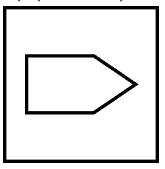 (correct)
(correct)

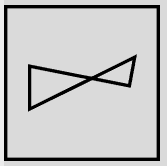
Solution-
Let's check the options –
First option: The given figure is a regular pentagon.
Second option: The given figure is irregular.
Third option: The given figure is irregular.
Fourth option: The given figure is irregular.
So, the figure in the first option is different from others as here all others are irregular figures. Hence, the first option is correct.
4. Directions: In the given question, there are four given figures, out of which three are similar in some manner and one is not like the others. Select the figure which is the odd one out.
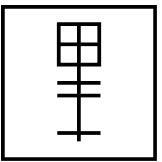
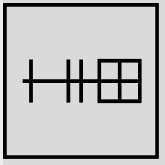
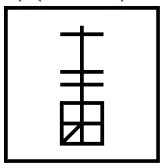 (correct)
(correct)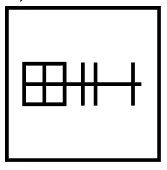
Solution-
The logic followed in the given options is as follows –
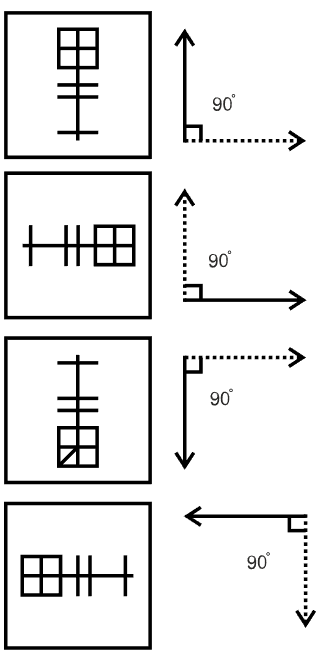
Here, all figures have the same number of squares, and the same number of horizontal and vertical lines, but only in the third option, a slant line is present in the square.
Hence, the third option is correct.
5. Directions: Select the answer figure which is the same as the question figure.
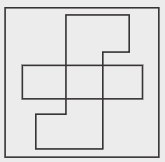

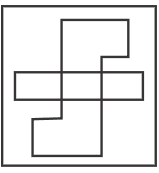 (correct)
(correct)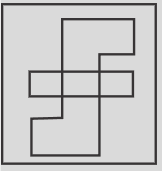
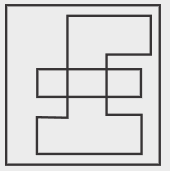
Solution-
Let’s check each option -
First option: In this figure, the bottom left part of S type image and the length of the rectangle are equal.
Second option: This figure is the same as the question figure.
Third option: In this figure, the bottom left part of S type image and the length of the rectangle are equal.
Fourth option: In this figure, the bottom part of the figure is different.
So, the figure in the second option is the same as the question figure. Hence, the second option is correct.
6. Directions: Find the odd figure from the given alternatives.
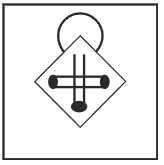
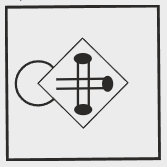
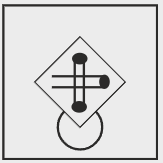 (correct)
(correct)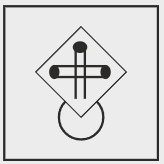
Solution-
Let's check each option –
First option: The two parallel lines without shaded part and the circle which is at the back of the rhombus are inline.
Second option: The two parallel lines without shaded part and the circle which is at the back of the rhombus are inline.
Third option: The two parallel lines without shaded part and the circle which is at the back of the rhombus are not in line.
Fourth option: The two parallel lines without shaded part and the circle which is at the back of the rhombus are inline.
Therefore, the figure in the third option is different from the others. Hence, the third option is correct.
7. Directions: Find the odd figure from the given alternatives.
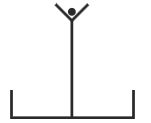
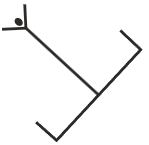
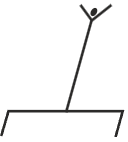 (correct)
(correct)
Solution-
Let's check each option –
First option: In this figure, the bottom two vertical lines are above the bottom horizontal line.
Second option: In this figure, the bottom two vertical lines are above the bottom horizontal line.
Third option: In this figure, the bottom two vertical lines are below the bottom horizontal line.
Fourth option: In this figure, the bottom two vertical lines are above the bottom horizontal line.
Therefore, the figure in the third option is different from the others. Hence, the third option is correct.
8. Directions: In the following question find the odd figure out from the given alternatives.
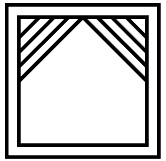
 (correct)
(correct)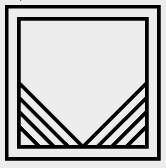
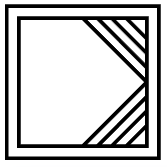
Solution-
On comparing all the figures given in the options we can observe that –
1. The two corners of the square have slanting lines.
2. The corners with slanting lines are adjacent to each other.
So, in the second option figure, the corners with slanting lines are not adjacent. Hence, the second option is correct.
9. Directions: In the following question find the odd figure out from the given alternatives.
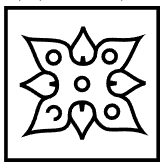 (correct)
(correct)
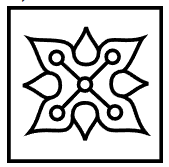
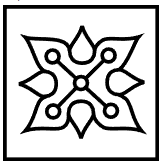
Solution-
On comparing all the figures given in the options, we can observe that the centre circle in three of the four options is connected with all the four circles inside the four leaves.
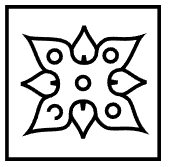
So, in this figure, the centre circle is not joined with the circles inside each of the leaves with a line. Hence, the first option is correct.
10. Directions: Out of the following five figures, four are alike in some manner and one differs from these in that manner. Select the odd figure.

 (correct)
(correct)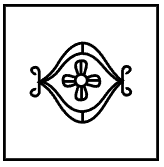
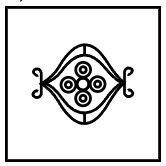
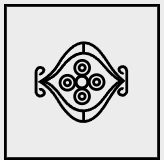
Solution-
Let's check each option –
First option: The two small curved lines on the outer side of the figure are facing in the same direction.
Second option: The two small curved lines on the outer side of the figure face in opposite directions.
Third option: The two small curved lines on the outer side of the figure face in opposite directions.
Fourth option: The two small curved lines on the outer side of the figure face in opposite directions.
Therefore, the figure given in the first option is different from the others. Hence, the first option is correct.
11. Directions: Out of the following five figures, four are alike in some manner and one differs from these in that manner. Select the odd figure.

 (correct)
(correct)

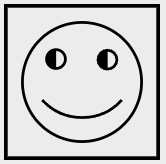
Solution-
Let's check each option –
First option: Here, the black parts given in the eyes of the smiley are in the opposite direction.
Second option: Here, the black parts given in the eyes of the smiley are in the same direction.
Third option: Here, the black parts given in the eyes of the smiley are in the same direction.
Fourth option: Here, the black parts given in the eyes of the smiley are in the same direction.
Therefore, the figure given in the first option is different from others. Hence, the first option is correct.
12. Directions: Out of the following five figures, four are alike in some manner and one differs from these in that manner. Select the odd figure.

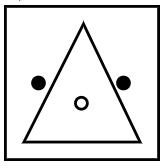
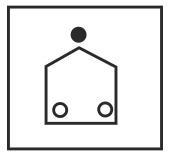 (correct)
(correct)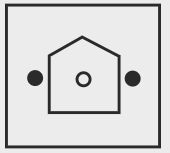
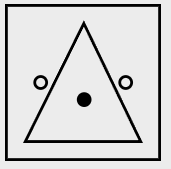
Solution-
Let's check each option –
First option: Here, one circle is inside and two circles are outside the triangle.
Second option: Here, two circles are inside and one circle is outside the pentagon.
Third option: Here, one circle is inside and two circles are outside the pentagon.
Fourth option: Here, one circle is inside and two circles are outside the triangle.
So, only the figure given in the second option is different from the others. Hence, the second option is correct.
13. Directions: Out of the following five figures, four are alike in some manner and one differs from these in that manner. Select the odd figure.

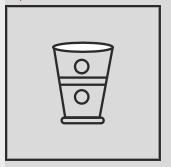
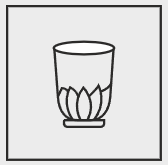
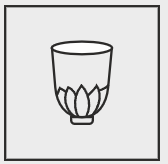 (correct)
(correct)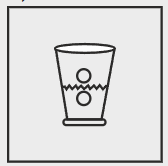
Solution-
Let's check each option –
First option: In this figure, the two lines given in the figure are equal to the base of the glass.
Second option: In this figure, the two lines given in the figure are equal to the base of the glass.
Third option: In this figure, the two lines given in the figure are smaller than the base of the glass.
Fourth option: In this figure, the two lines given in the figure are equal to the base of the glass.
Therefore, the figure in the third option is different from the others. Hence, the third option is correct.
14. Directions: Find the odd figure from the given alternatives.


 (correct)
(correct)
Solution-
Let's check each option –
First option: The figure is formed with the help of three lines.
Second option: The figure is formed with the help of four lines.
Third option: No lines have been used for the formation of a circle.
Fourth option: The figure is formed with the help of four lines.
Therefore, the figure in the third option is different from the others. Hence, the third option is correct.
15. Directions: Out of the following five figures, four are alike in some manner and one differs from these in that manner. Select the odd figure.

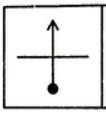
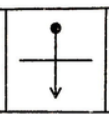
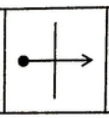
 (correct)
(correct)
Solution-
Let's check each option –
First option: The circle and arrow form the part of the same line.
Second option: The circle and arrow form the part of the same line.
Third option: The circle and arrow form the part of the same line.
Fourth option: The circle and arrow form the part of two different lines.
So, only the figure given in the fourth option is different from the others. Hence, the fourth option is correct.
16. Directions: Out of the following five figures, four are alike in some manner and one differs from these in that manner. Select the odd figure.

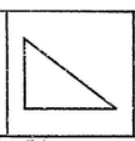

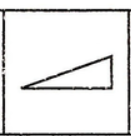
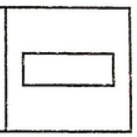 (correct)
(correct)
Solution-
Let's check each option –
First option: The given figure has three sides.
Second option: The given figure has three sides.
Third option: The given figure has three sides.
Fourth option: The given figure has four sides.
So, only the figure given in the fourth option is different from the others. Hence, the fourth option is correct.
17. Directions: Out of the following five figures, four are alike in some manner and one differs from these in that manner. Select the odd figure.

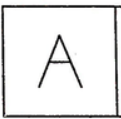

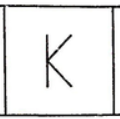
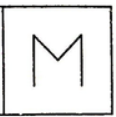 (correct)
(correct)
Solution-
Let's check each option –
First option: The letter A is formed with the help of three lines.
Second option: The letter F is formed with the help of three lines.
Third option: The letter K is formed with the help of three lines.
Fourth option: The letter M is formed with the help of four lines.
So, only the figure given in the fourth option is different from the others. Hence, the fourth option is correct.
18. Directions: Out of the following five figures, four are alike in some manner and one differs from these in that manner. Select the odd figure.



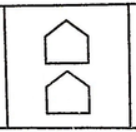 (correct)
(correct)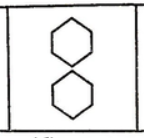
Solution-
Let's check each option –
First option: Here, the triangle at the bottom is the mirror image of the top.
Second option: Here, the triangle at the bottom is the mirror image of the top.
Third option: Here, the pentagon at the bottom is not the mirror image of the top.
Fourth option: Here, the hexagon at the bottom is the mirror image of the top.
So, only the figure given in the third option is different from the others. Hence, the third option is correct.
19. Directions: Out of the following five figures, four are alike in some manner and one differs from these in that manner. Select the odd figure.

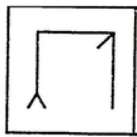 (correct)
(correct)
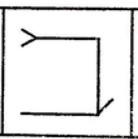
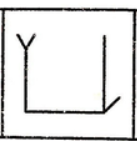
Solution-
Let's check each option –
First option: The small line attached to one of the corners of the figure is facing inside.
Second option: The small line attached to one of the corners of the figure is facing outside.
Third option: The small line attached to one of the corners of the figure is facing outside.
Fourth option: The small line attached to one of the corners of the figure is facing outside.
So, only the figure given in the first option is different from the others. Hence, the first option is correct.
20. Directions: Out of the following five figures, four are alike in some manner and one differs from these in that manner. Select the odd figure.

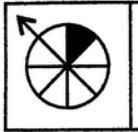
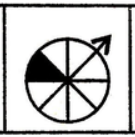 (correct)
(correct)
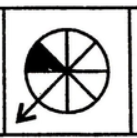
Solution-
Let's check each option –
First option: The arrow is one part away from the shaded area.
Second option: The arrow is two parts away from the shaded area.
Third option: The arrow is one part away from the shaded area.
Fourth option: The arrow is one part away from the shaded area.
So, only the figure given in the second option is different from the others. Hence, the second option is correct.
Read more: The verbal reasoning topics are given below.
About the Faculty
Tanu Gupta, with over a decade of experience as a reasoning faculty, specializes in preparing students for various entrance examinations and career development. Her extensive work with multiple educational platforms and institutions has honed her expertise in logical and analytical thinking. Her dedication to innovative teaching methods ensures these articles provide practical insights and expert guidance.
Frequently Asked Questions (FAQs)
The patterns of non-verbal reasoning classification questions are often based on shapes, symmetry, colour, size, increase or decrease in the number of elements present and rotation of figures to some extent.
As such there are no specific skills required but aspirants need to practice regularly to develop an understanding of different patterns that are often seen in the exams.
In the SSC and other competitive exams non-verbal reasoning classification-based questions are uncommon nowadays but an aspirant can still expect a question or two on it.
Online mock tests and resources as well as certain mobile applications are available for practice. Aspirants can also buy practice sets books from offline stores.
No, there is no short trick to solve the questions based on non-verbal reasoning classification. Aspirants just need to practice as many questions as possible to develop an understanding of the topic asked in the exams and then they are good to go.
Non-Verbal reasoning is defined as the ability to assess the visual information and solving the problem by applying logic and visual reasoning.
The list of the topics that come in non-verbal reasoning are as follows:
1) Non Verbal Analogy Reasoning
2) Figure Series Reasoning
3) Embedded figure
4) Cube Reasoning
5) Dice Reasoning
6) Figure Counting Reasoning
7) Completion of figure Reasoning
8) Paper cutting and folding Reasoning
9) Mirror and Water Image Reasoning
A non-verbal reasoning pdf consists of examples and practice questions of non-verbal reasoning topics such as water and mirror images, classification, analogy, cubes, dices, embedded figure, completion of the figure, figure counting etc.
Non-Verbal reasoning in mental ability is defined as the ability of an individual's to understand and analyses the visual information such as images, diagrams, patterns etc.
Non-verbal classification is another name for figure classification. When classifying figures, some will be provided, some will share similarities, and one will be unique. Thus, it should be necessary to choose the odd man out.

